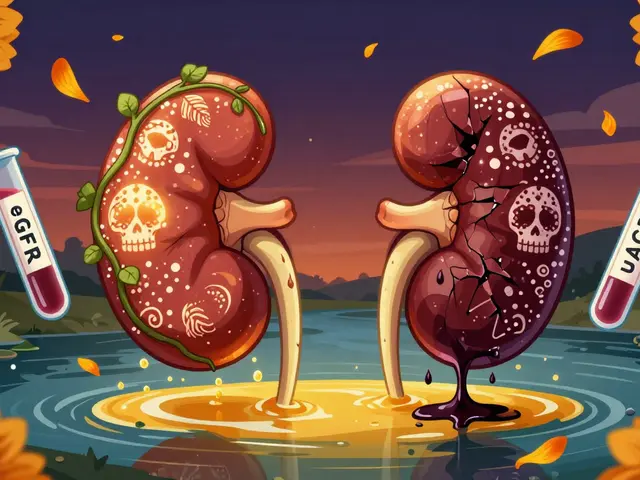OCD: What it feels like and what actually helps
OCD isn't just being tidy or liking routines. It’s when unwanted thoughts (obsessions) trigger repetitive actions (compulsions) that take over hours of your day, cause real anxiety, and get in the way of work, school, or relationships. About 1–2% of people live with OCD at any time. If your rituals or fears cause obvious distress or waste time, that’s a signal to act.
How to spot OCD fast
Watch for these clear signs: persistent intrusive thoughts you can’t dismiss (worrying about germs, harm, or order), urges to repeat actions (checking, counting, cleaning) to reduce anxiety, and noticeable time spent on these behaviors each day. If you avoid places or people because of these fears, or feel drained by trying to control them, it’s more than a quirk.
Therapy and medication that work
Exposure and Response Prevention (ERP) is the top treatment. ERP means facing feared thoughts or situations in a controlled way and resisting the urge to perform the compulsion. It sounds hard because it is, but many people feel measurably better after a few months. Cognitive Behavioral Therapy (CBT) that includes ERP teaches practical tools to change how you react to intrusive thoughts.
Several medications also help. SSRIs—like sertraline, fluoxetine, fluvoxamine—are commonly used and can reduce obsessive thinking and the urge to compulsively act. Doctors sometimes raise the dose higher than for depression, and it can take 8–12 weeks to see change. For stubborn cases, a psychiatrist may add or switch medicines, or recommend specialized programs.
If you can, look for a therapist who explicitly offers ERP. Teletherapy options are common now, and many therapists will coach you through exposures by phone or video. If cost or access is an issue, some clinics offer sliding fees, and local support groups can point you to resources.
Everyday steps you can try now
Start small. Pick one low-stakes exposure you can try for a week—like touching a doorknob and delaying washing your hands for a minute. Track how long the urge lasts and how it eases without the ritual. Use a timer, keep notes, and celebrate tiny wins.
Build a simple routine to reduce fatigue: regular sleep, short daily walks, and a limit on avoidant behaviors (like excessive reassurance from friends). Try grounding techniques when anxiety spikes: slow breathing for two minutes, naming five things you see, or holding a cold object for 30 seconds. These don’t cure OCD but they make exposures easier.
When to seek urgent help: if compulsions risk your safety, you’re avoiding essential life tasks, or you feel hopeless or suicidal. Contact your doctor, a mental health crisis line, or emergency services right away.
Related reads on this site: "Effective Therapy Approaches for Managing PMDD Symptoms" (therapy methods that overlap with CBT), "How Chronic Hepatitis C Affects Your Emotional Wellbeing" (coping with chronic illness and mental health), and "Massage Therapy for Tremors" (nonmedication support ideas). If you want, use our contact page to find how to reach professionals who can help you start ERP or medication safely.

Anxiety and OCD often go hand in hand, creating unique challenges for those affected. This article explores how these conditions are interconnected, delves into the symptoms, and offers practical tips for managing daily life. Understanding the overlap can brighten the path toward effective treatment and a better quality of life. With a blend of expert insights and practical strategies, readers will gain a clearer view of these mental health issues.
Chris Gore Mar 9, 2025




